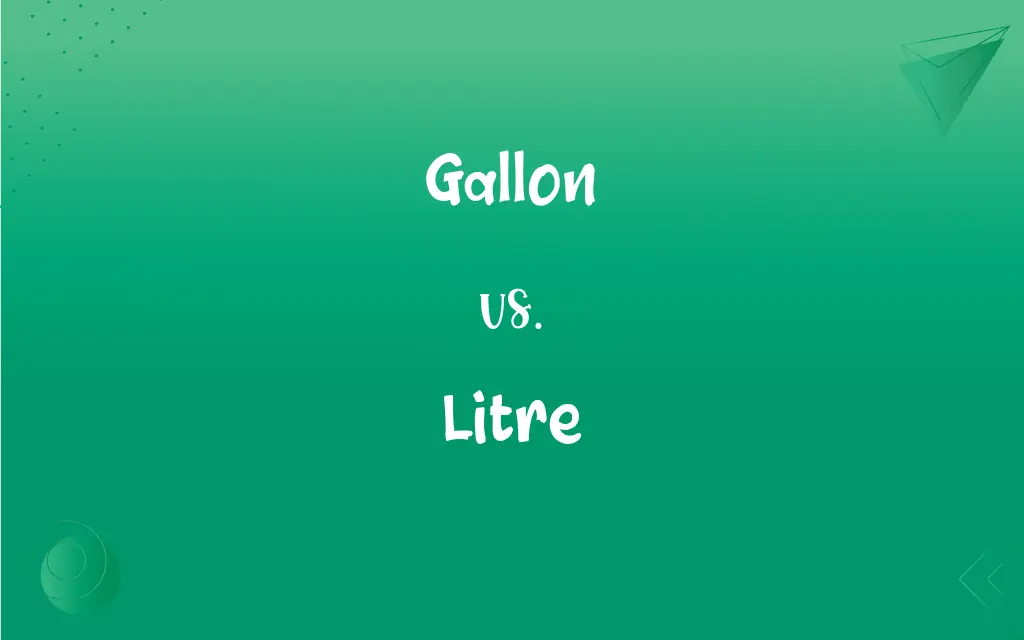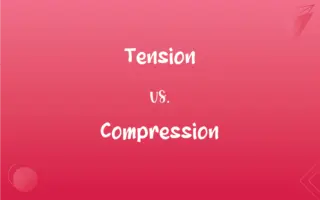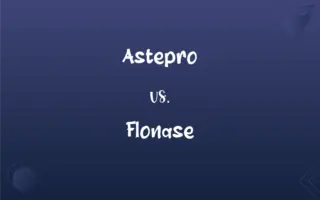Gallon vs. Litre: What's the Difference?
Edited by Janet White || By Harlon Moss || Updated on October 15, 2023
A gallon is a unit of volume used primarily in the U.S., while a litre (or liter) is a metric unit of volume. One U.S. gallon equals 3.785 liters.

Key Differences
A gallon and a litre are both units of measurement used to quantify volume, but they hail from different measurement systems and have distinct histories. The gallon is most commonly used in the United States and is a part of the U.S. customary system of measurements. In contrast, the litre, spelled "liter" in American English, is a metric unit and is recognized and utilized globally, especially in countries that have adopted the metric system.
Historically, the term "gallon" has had various definitions, but in the U.S., the most widely used is the U.S. liquid gallon, which is defined as 231 cubic inches. The litre, on the other hand, was introduced by the French during the late 18th century and is derived from the original Greek term for a measure, "litra." One litre is defined as the volume of one kilogram of pure water at its maximum density under standard conditions.
It's essential to note that there are differences within the category of gallons too. For instance, the U.S. liquid gallon differs from the U.S. dry gallon and the UK's imperial gallon. The litre maintains more consistency worldwide, although its definition has undergone minor changes in the past.
To provide a practical perspective, consider fuel consumption. In the U.S., fuel efficiency is often measured in miles per gallon. In many other parts of the world, it's measured in liters per 100 kilometers. These distinctions underscore the regional preferences for the gallon and litre as units of volume.
Comparison Chart
Measurement System
U.S. customary system
Metric system
ADVERTISEMENT
Usage
Primarily in the U.S.
Globally, especially in metric system countries
Historical Origin
Various definitions; U.S. liquid gallon defined as 231 cubic inches
Introduced by the French; derived from Greek "litra"
Variations
U.S. liquid gallon, U.S. dry gallon, Imperial gallon
Standardized metric unit
Practical Application
Fuel efficiency in the U.S. measured in miles per gallon
Fuel efficiency in many countries measured in liters per 100 km
Gallon and Litre Definitions
Gallon
A container with a capacity of one gallon.
Fill up that gallon with fresh water.
ADVERTISEMENT
Litre
A measure used globally, especially in metric system countries.
Gasoline in Europe is often sold by the litre.
Gallon
A unit of volume in the U.S. customary system.
He bought a gallon of milk from the store.
Litre
Standardized for measuring both liquids and solids.
The jar has a capacity of three litres.
Gallon
Equal to 231 cubic inches or 3.785 liters (U.S. liquid gallon).
The car's fuel tank can hold 15 gallons.
Litre
A metric unit of volume.
She poured a litre of juice into the pitcher.
Gallon
Differentiated from dry and imperial gallons.
Remember, the U.S. gallon and the imperial gallon are not the same.
Litre
Equal to 1,000 cubic centimeters or 1/1,000 cubic meter.
The bottle contains two litres of soda.
Gallon
A measurement used primarily for liquid substances.
The aquarium is twenty gallons in size.
Litre
Represents the volume of one kilogram of water.
One litre of water weighs roughly one kilogram.
Gallon
A unit of volume in the US Customary System, used in liquid measure, equal to 4 quarts (3.785 liters).
Litre
Variant of liter.
Gallon
A unit of volume in the British Imperial System, used in liquid and dry measure, equal to 4 quarts (4.546 liters). See Table at measurement.
Litre
The metric unit of fluid measure, equal to one cubic decimetre. Symbols: l, L, ℓ
You should be able to fill four cups with one litre of water.
Litre
(informal) A measure of volume equivalent to a litre.
Litre
Same as Liter.
Litre
A metric unit of capacity equal to the volume of 1 kilogram of pure water at 4 degrees centigrade and 760 mm of mercury (or approximately 1.76 pints)
FAQs
How many liters are in a U.S. gallon?
One U.S. gallon is equivalent to 3.785 liters.
Is a litre part of the metric system?
Yes, the litre is a metric unit of volume.
Can we convert gallons to liters and vice versa?
Yes, with the conversion factor of 3.785 liters per U.S. gallon.
Are there different types of gallons?
Yes, including the U.S. liquid gallon, U.S. dry gallon, and the UK's imperial gallon.
Is a litre the same everywhere?
Yes, the litre has a standardized metric definition.
Why is the U.S. gallon different from the imperial gallon?
Historical definitions and standards led to the differences.
What's the origin of the term "litre"?
It derives from the Greek term "litra" for a measure.
Is a milliliter a subdivision of a litre?
Yes, there are 1,000 milliliters in a litre.
In which countries is fuel sold by the gallon?
Primarily in the U.S.
How many cubic inches are in a U.S. liquid gallon?
There are 231 cubic inches in a U.S. liquid gallon.
Do the UK and the U.S. use the same gallon?
No, the UK uses the imperial gallon, which is larger.
Which is larger, a U.S. gallon or an imperial gallon?
The imperial gallon is larger.
Can I use gallons and liters interchangeably in recipes?
It's essential to convert between them correctly, as they represent different volumes.
Is there a simple way to visualize a litre?
Think of a one-liter soda bottle.
Is the gallon used worldwide?
The gallon is primarily used in the U.S., while the UK uses the imperial gallon.
Are gallons and liters used for both solids and liquids?
Typically, gallons and liters measure liquids, but they can be used for solids.
How is fuel efficiency typically measured outside the U.S.?
Often in liters per 100 kilometers.
Is the spelling "liter" also correct?
Yes, "liter" is the American spelling, while "litre" is the British spelling.
Why was the litre defined based on water?
Because water's properties are consistent and can be easily standardized.
How do I convert between U.S. and imperial gallons?
One imperial gallon is equivalent to about 1.2 U.S. gallons.
About Author
Written by
Harlon MossHarlon is a seasoned quality moderator and accomplished content writer for Difference Wiki. An alumnus of the prestigious University of California, he earned his degree in Computer Science. Leveraging his academic background, Harlon brings a meticulous and informed perspective to his work, ensuring content accuracy and excellence.
Edited by
Janet WhiteJanet White has been an esteemed writer and blogger for Difference Wiki. Holding a Master's degree in Science and Medical Journalism from the prestigious Boston University, she has consistently demonstrated her expertise and passion for her field. When she's not immersed in her work, Janet relishes her time exercising, delving into a good book, and cherishing moments with friends and family.































































